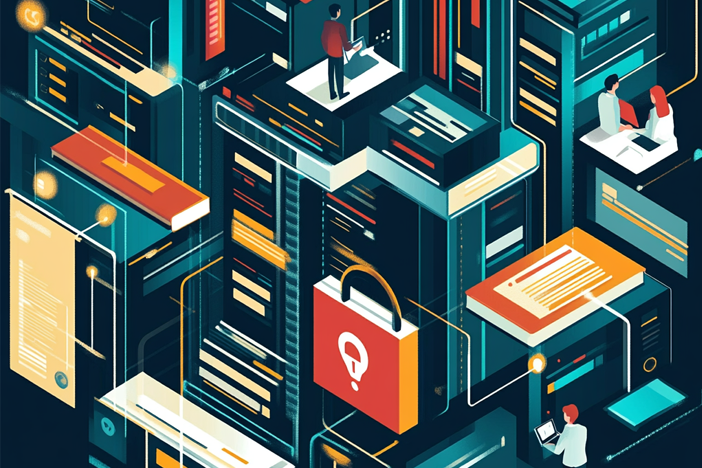By Kelly Kantola, CIO – Studio Enterprise
Educational institutions manage vast amounts of data. From student records and staff details to research databases, the need to protect this information is more crucial than ever. Yet, as data grows, so do cyber threats. A recent study revealed that educational institutions are frequent targets for data breaches, often due to insufficient security measures. With students, staff, and faculty relying on digital platforms, how can schools and universities better secure their data? In this article, we’ll discuss critical strategies educational institutions can implement to safeguard their data in an increasingly digital landscape.
-
Embrace Comprehensive Cybersecurity Policies
A secure educational environment builds on a strong data protection policy. Historically, academic institutions have long been targets for hackers. Clearing the next hurdle in the cybersecurity obstacle course has left them vulnerable to attack. When it comes to breach threats, schools are a natural target. They host all kinds of information-rich databases. They often handle personally identifiable information (PII) for thousands of students, potential students, and alums…and the PII dates back a long way. A school can’t really protect itself unless it first protects its data. The good news is that a data protection policy has only a few essential components. Institutions that can’t do all of it can still do some of it and should do whatever they can. That can only dead-end in a more secure campus environment.
-
Invest in Advanced Encryption and Security Technologies
Encryption is a powerful and essential tool for protecting sensitive data. It guarantees that even if data is captured, it is rendered unreadable to anyone lacking the proper permissions. Schools must use encryption methods that are current and robust. For instance, student records and fiscal data should be encrypted with algorithms that have been proven to work, like those used in the Advanced Encryption Standard (AES). Schools cannot afford to be tightfisted when it comes to firewalls, intrusion detection systems, and anti-malware software. These are basic protections that any network should have if it is to have any kind of meaningful protection against outside intrusion. Beyond these basics, schools should consider additional technologies like:
- Two-factor authentication (2FA): Requiring a second form of authentication, like a mobile code, adds an extra layer of security.
- Biometric access controls: Biometrics, such as fingerprint or facial recognition, can provide an added level of security for sensitive information, though they may require a higher investment.
-
Prioritize Data Privacy and Compliance
Educational institutions must follow various data privacy regulations. One of the most important is the Family Educational Rights and Privacy Act (FERPA), which governs the privacy of student information. Compliance isn’t just about avoiding fines, though; it’s equally, if not more, about establishing trust with students and families, who reasonably expect their private information to be kept safe.
To that end, regular policy review is a good first step toward better compliance. Getting a handle on what your institution is doing (or not doing) with various categories of personal information is a necessary precondition for figuring out what other kinds of personal information should (or shouldn’t) be done in the first place. Auditing can take many forms, from self-study to hiring internal or external experts. Of course, a dedicated compliance officer never hurts.
-
Foster a Culture of Cybersecurity Awareness
The IT department cannot be solely responsible for cybersecurity; everyone in the institution must share this critical duty. A culture of cybersecurity awareness must permeate all levels of the organization—from the boardroom to the basement—to keep staff and students secure when accessing institutional networks and data. Institutions can promote this partial culture by:
- Campaigning for awareness: Posters, emails, and videos promoting basic cybersecurity practices can go a long way toward achieving the appearance of security. (Phishing is still a phenomenal way to attack users.)
- Rewarding observed good behavior: If someone follows basic cybersecurity practices, reward them. This will incentivize others to follow and enforce a more ‘secure-focused’ institution.
- Holding ‘whole community’ trainings: Just talking to faculty and staff doesn’t fully engage the entire culture. Training sessions also inform the community as a whole of what to look out for.
-
Regularly Update and Patch Systems
Hackers frequently target systems running outdated software. All system components—whether software or hardware—must be maintained and kept secure to preserve the system’s integrity. This maintenance includes applying updates and patches, as well as the routine checking of components for potential vulnerabilities. Patching is one of the most critical aspects of system maintenance—neglecting it can leave a system wide open for attack. Yet even when a patch is available, it doesn’t help if it’s not applied. Institutions that lack a clear patching policy are at risk, as cybercriminals delight in the prospect of compromised systems.
Some systems, like servers, are so critical that any potential downtime seems unacceptable. However, these systems must still be maintained. In many cases, a careful patch management routine allows for the safe updating of files without substantial risk of system failure or downtime.
-
Implement Regular Risk Assessments
Periodically carrying out risk assessments is a best practice for any organization that wants to surface and then shore up potential vulnerabilities in its system. Potential points of weakness can reveal themselves during these assessments. The assessors sometimes find themselves in bloodhound mode, sniffing out the network’s weak spots. Assessors take a good, long look at an institution’s current cybersecurity controls, the potential threats against those controls (and against the institution’s data and systems), and what risk mitigation strategies to employ. The institution then decides which strategies make the most sense and implements them. That is a bare-bones version of what happens during the magical risk assessment process.
-
Secure Cloud-Based Data and Applications
Many organizations are moving to cloud-based solutions for their flexibility and scalability. However, while the cloud offers countless opportunities and benefits, it also presents a number of security challenges. Colleges and universities must guarantee that any cloud provider they use meets rigorous data security standards. This includes ensuring that the cloud provider offers good, solid encryption and that they have a number of both compliance and user-access control measures in place.
Before choosing a cloud service provider, organizations should do some good, old-fashioned legwork and research the kind of security protocols the prospective provider has in place. This includes not only how secure the actual cloud environment is but also how the provider governs access to the environment itself. Multi-factor authentication (MFA) should be in place, and the provider should have a very clear set of access permissions that the organization can configure. Once in the cloud, organizations should monitor the environment just like they would any on-premises environment.
-
Develop an Incident Response and Recovery Plan
Even with the best efforts, no institution can guarantee immunity from data breaches. This makes having an incident response and recovery plan an absolute necessity. An incident response plan lays out the steps to take when a security breach occurs, like isolating affected systems, notifying stakeholders, and documenting the breach for later ingestion by forensic accountants. A recovery plan is all about getting things back to normal and mainly involves restoring data from backups, fixing vulnerabilities, and learning from the incident so the institution can better “defend against the next breach.” Periodically testing these plans through drills or simulations can help institutions refine their response strategies. Having a straightforward way of communicating with students, staff, and families is another crucial element of maintaining trust when data breaches happen.
Final Thoughts
The digital age offers educational institutions incredible opportunities, from streamlined operations to enhanced learning experiences. However, with these advantages comes the responsibility of protecting sensitive data. By implementing comprehensive cybersecurity policies, leveraging advanced technology, fostering a culture of awareness, and preparing for potential incidents, educational institutions can secure their data for the future.
As cyber threats evolve, so must our commitment to safeguarding information. For educational institutions, this means staying proactive, vigilant, and continually updating security practices. By prioritizing data protection, schools can not only comply with regulations but also build a secure, trustworthy environment for the next generation of learners.
About Kelly Kantola

Kelly Kantola is the forward-thinking Chief Information Officer (CIO) of Studio Enterprise, where he has been leading the company’s technology strategy since February 2019. With over two decades of experience in IT leadership, Kelly has played a crucial role in transforming Studio Enterprise’s technological infrastructure, driving operational efficiency, and implementing cloud-first strategies. His extensive expertise in cybersecurity, cloud technologies, and digital transformation ensures that Studio Enterprise remains at the cutting edge of education technology services.
